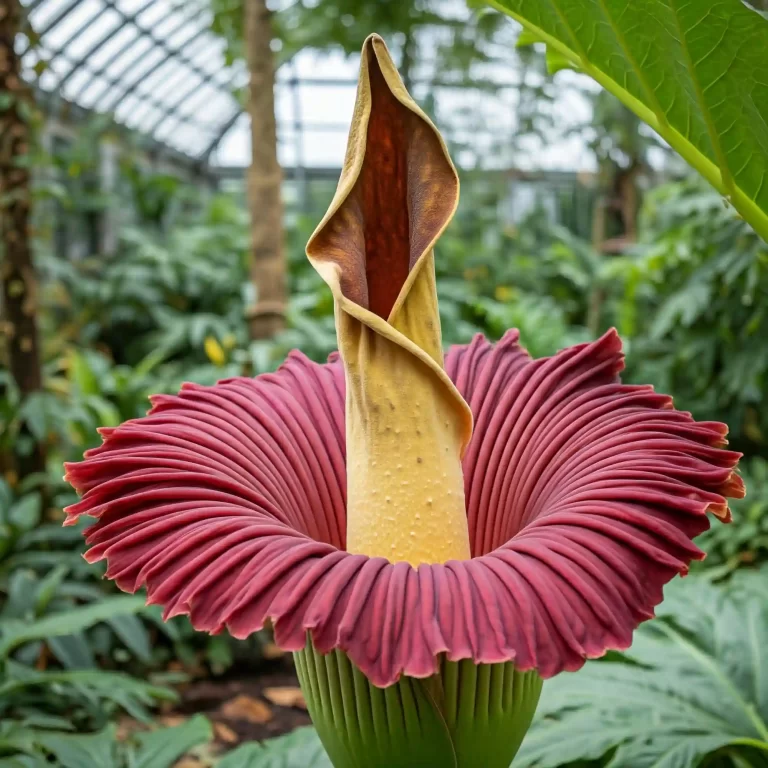Many gardeners struggle to cultivate Wake-robin flowers (Trillium spp.) successfully. These beautiful woodland plants are known for their unique three-petaled blooms and can add a touch of elegance to any garden. However, their specific growing requirements often leave gardeners frustrated and disappointed.
Without the right knowledge and techniques, Wake-robin flowers can fail to thrive, leading to wasted time, effort, and resources. Gardeners may find themselves dealing with poor growth, disease, or even plant death, which can be disheartening and discouraging.
This comprehensive guide will provide you with all the information you need to successfully grow Wake-robin flowers. From understanding their ideal growing conditions to mastering planting and care techniques, this article will equip you with the knowledge to cultivate these stunning flowers in your garden.
What Are Wake-robin Flowers?
Wake-robin flowers, scientifically known as Trillium spp., are a group of perennial plants native to North America and Asia. They are part of the Melanthiaceae family and are commonly found in woodland areas. These flowers are highly prized for their distinctive three-petaled blooms, which come in various colors, including white, red, pink, and yellow.
Characteristics of Wake-robin Flowers
Wake-robin flowers are characterized by their unique structure. Each plant typically has three large, showy petals that sit above three smaller sepals. The leaves are also arranged in whorls of three, adding to the plant’s symmetrical appearance. The flowers bloom in early spring, often before the tree canopy fully develops, allowing them to take advantage of the sunlight that reaches the forest floor.
Different Species and Varieties of Trillium
There are over 40 species of Trillium, each with its own unique characteristics. Some of the most popular species include:
- Trillium grandiflorum (Large-flowered Trillium): Known for its large, white flowers that turn pink as they age.
- Trillium erectum (Red Trillium): Features deep red or maroon flowers and is also known as Stinking Benjamin due to its unpleasant odor.
- Trillium luteum (Yellow Trillium): Recognized by its yellow flowers and lemon-scented fragrance.
- Trillium cuneatum (Little Sweet Betsy): Has maroon to reddish-brown flowers and is known for its sweet scent.
Historical and Cultural Significance
Wake-robin flowers have a rich history and cultural significance. In Native American folklore, Trillium flowers were often used for medicinal purposes, such as treating wounds and easing childbirth. The plant’s name, “Wake-robin,” is derived from the belief that the flowers bloom around the same time as the arrival of robins in spring.
Popular Trillium Species and Their Characteristics
| Species | Common Name | Flower Color | Fragrance | Notable Features |
| Trillium grandiflorum | Large-flowered Trillium | White | None | Flowers turn pink with age |
| Trillium erectum | Red Trillium | Red/Maroon | Unpleasant odor | Also known as Stinking Benjamin |
| Trillium luteum | Yellow Trillium | Yellow | Lemon-scented | Fragrant flowers |
| Trillium cuneatum | Little Sweet Betsy | Maroon | Sweet scent | Known for its pleasant fragrance |
Ideal Growing Conditions for Wake-robin Flowers
To successfully grow Wake-robin flowers, it’s essential to replicate their natural woodland habitat as closely as possible. These plants thrive in specific conditions that provide the right balance of light, moisture, and soil composition.
Soil Requirements
Wake-robin flowers prefer well-drained, rich, and slightly acidic soil. The ideal soil pH for Trillium plants ranges from 5.5 to 6.5. It’s important to ensure that the soil is rich in organic matter, which can be achieved by adding compost or leaf mold. Good drainage is crucial to prevent waterlogging, which can lead to root rot.
Light Requirements
Trillium plants are shade-loving and thrive in dappled sunlight or partial shade. They are typically found in deciduous forests where they receive filtered sunlight through the tree canopy. Direct sunlight can be too harsh for these delicate plants, so it’s best to plant them in areas that receive morning sun and afternoon shade.
Watering Needs and Moisture Levels
Consistent moisture is key to the healthy growth of Wake-robin flowers. The soil should be kept evenly moist but not waterlogged. During dry periods, it’s important to water the plants regularly to maintain the necessary moisture levels. Mulching around the plants can help retain soil moisture and regulate temperature.
Climate and Temperature Considerations
Wake-robin flowers are hardy in USDA zones 4 to 9. They prefer cool to moderate temperatures and can tolerate light frost. However, extreme heat or prolonged drought can stress the plants and hinder their growth. In regions with hot summers, providing additional shade and ensuring adequate watering can help protect the plants.
Key Growing Conditions for Wake-robin Flowers
- Soil: Well-drained, rich, slightly acidic (pH 5.5-6.5)
- Light: Dappled sunlight or partial shade
- Water: Consistent moisture, avoid waterlogging
- Climate: Cool to moderate temperatures, hardy in USDA zones 4-9
How to Plant Wake-robin Flowers
Planting Wake-robin flowers requires careful preparation and attention to detail. Whether you’re starting from seeds or transplants, following the right steps will ensure successful establishment and growth.
Choosing the Right Location
Selecting the right location is crucial for the success of Wake-robin flowers. Look for a spot in your garden that mimics their natural woodland habitat. The area should receive dappled sunlight or partial shade and have well-drained, rich soil. Avoid areas with heavy clay or sandy soil, as these can hinder the plant’s growth.
Preparing the Soil
Before planting, prepare the soil by incorporating organic matter such as compost or leaf mold. This will improve soil structure, fertility, and drainage. Test the soil pH and adjust if necessary to ensure it falls within the ideal range of 5.5 to 6.5. Remove any weeds or debris from the planting area to reduce competition for nutrients and water.
Planting from Seeds vs. Transplants
Planting from Seeds
Growing Wake-robin flowers from seeds can be a rewarding but challenging process. Trillium seeds have a double dormancy, meaning they require two cold periods to germinate. Here’s a step-by-step guide to planting from seeds:
- Collecting Seeds: Harvest seeds from mature Trillium plants in late summer or early fall. The seeds are contained in a fleshy fruit that should be allowed to ripen on the plant.
- Stratification: To break dormancy, stratify the seeds by placing them in a moist medium (such as sand or peat moss) and storing them in the refrigerator for 3-4 months.
- Sowing Seeds: After stratification, sow the seeds in a seed tray filled with a well-draining seed-starting mix. Cover the seeds lightly with soil and keep the tray in a cool, shaded area.
- Germination: Germination can take up to two years, so patience is key. Keep the soil consistently moist and protect the seedlings from extreme temperatures.
Planting from Transplants
Using transplants is a quicker and more reliable method for growing Wake-robin flowers. Follow these steps for successful transplanting:
- Selecting Transplants: Purchase healthy Trillium transplants from a reputable nursery. Look for plants with strong roots and no signs of disease.
- Planting Time: The best time to transplant Trillium is in early spring or fall when the plants are dormant.
- Digging Holes: Dig holes that are slightly larger than the root ball of the transplants. Space the holes about 12-18 inches apart to allow for growth.
- Planting: Place the transplants in the holes, ensuring that the crown is level with the soil surface. Backfill with soil and water thoroughly.
Best Time of Year to Plant
The optimal time to plant Wake-robin flowers is in early spring or fall. Planting during these seasons allows the plants to establish roots before the onset of extreme temperatures. Spring planting takes advantage of the cool, moist conditions, while fall planting allows the plants to settle in before winter dormancy.
Comparison of Planting Methods
| Method | Advantages | Disadvantages |
| Planting from Seeds | Cost-effective, rewarding process | Long germination period, requires patience |
| Planting from Transplants | Quick establishment, reliable growth | Higher initial cost, limited availability |
Caring for Wake-robin Flowers
Proper care is essential to ensure the healthy growth and longevity of Wake-robin flowers. By following these care guidelines, you can maintain vibrant and thriving plants in your garden.
Watering Schedule and Techniques
Wake-robin flowers require consistent moisture to thrive. Water the plants regularly, especially during dry periods, to maintain the necessary moisture levels. Here are some watering tips:
- Frequency: Water the plants deeply once a week, ensuring the soil remains consistently moist but not waterlogged.
- Method: Use a soaker hose or drip irrigation system to deliver water directly to the root zone, minimizing water loss through evaporation.
- Mulching: Apply a layer of organic mulch, such as leaf mold or wood chips, around the base of the plants to help retain soil moisture and regulate temperature.
Fertilization: Types and Frequency
Wake-robin flowers benefit from regular fertilization to support their growth and flowering. Here are some guidelines for fertilizing Trillium plants:
- Type: Use a balanced, slow-release fertilizer with an N-P-K ratio of 10-10-10 or 5-10-5. Organic options, such as compost or well-rotted manure, are also beneficial.
- Frequency: Apply fertilizer in early spring, just as new growth begins, and again in mid-summer. Avoid over-fertilizing, as this can lead to excessive foliage growth at the expense of flowers.
- Application: Spread the fertilizer evenly around the base of the plants, avoiding direct contact with the stems. Water thoroughly after application to help the nutrients penetrate the soil.
Mulching and Weed Control
Mulching is an important practice for maintaining healthy Wake-robin flowers. It helps conserve soil moisture, suppress weeds, and improve soil structure. Follow these mulching tips:
- Material: Use organic mulch, such as leaf mold, wood chips, or shredded bark. These materials decompose over time, adding valuable organic matter to the soil.
- Depth: Apply a 2-3 inch layer of mulch around the base of the plants, extending out to the drip line. Avoid piling mulch directly against the stems, as this can lead to rot.
- Weed Control: Regularly check for and remove weeds that compete with Wake-robin flowers for nutrients and water. Hand-pulling is the most effective method for controlling weeds in a Trillium garden.
Pruning and Deadheading
Pruning and deadheading are essential for maintaining the health and appearance of Wake-robin flowers. Here are some tips for these tasks:
- Pruning: Trim back any damaged or diseased foliage as soon as it is noticed. This helps prevent the spread of disease and encourages healthy new growth.
- Deadheading: Remove spent flowers to prevent the plant from expending energy on seed production. This can also encourage a second flush of blooms in some species.
- Seasonal Care: In late fall, after the foliage has died back, cut the plants down to ground level. This helps tidy up the garden and prepares the plants for winter dormancy.
Essential Care Tips for Wake-robin Flowers
- Watering: Deeply once a week, use soaker hose or drip irrigation
- Fertilization: Balanced, slow-release fertilizer, apply in spring and mid-summer
- Mulching: 2-3 inch layer of organic mulch, avoid piling against stems
- Weed Control: Regular hand-pulling of weeds
- Pruning: Trim damaged foliage, deadhead spent flowers, cut back in late fall
Propagation Methods for Wake-robin Flowers
Propagating Wake-robin flowers can be done through division or seed propagation. Each method has its own advantages and challenges, and choosing the right one depends on your gardening goals and resources.
Division
Division is a reliable and relatively quick method for propagating Wake-robin flowers. It involves separating the rhizomes of mature plants and replanting them. Here’s how to do it:
- Timing: The best time to divide Trillium plants is in early spring or fall when the plants are dormant.
- Preparation: Carefully dig up the entire plant, taking care not to damage the rhizomes.
- Division: Use a sharp knife or spade to divide the rhizomes into sections, each with at least one bud and a portion of the root system.
- Replanting: Replant the divisions immediately in prepared soil, ensuring the buds are just below the soil surface. Water thoroughly to help the plants establish.
Seed Propagation
Seed propagation is a more time-consuming method but can be rewarding for patient gardeners. Here’s a step-by-step guide:
- Collecting Seeds: Harvest seeds from mature Trillium plants in late summer or early fall. The seeds are contained in a fleshy fruit that should be allowed to ripen on the plant.
- Stratification: To break dormancy, stratify the seeds by placing them in a moist medium (such as sand or peat moss) and storing them in the refrigerator for 3-4 months.
- Sowing Seeds: After stratification, sow the seeds in a seed tray filled with a well-draining seed-starting mix. Cover the seeds lightly with soil and keep the tray in a cool, shaded area.
- Germination: Germination can take up to two years, so patience is key. Keep the soil consistently moist and protect the seedlings from extreme temperatures.
- Transplanting: Once the seedlings have developed a few true leaves, they can be transplanted to their permanent location in the garden.
Tips for Successful Propagation
- Patience: Both division and seed propagation require patience and careful attention to detail.
- Protection: Protect young plants from pests and extreme weather conditions.
- Monitoring: Regularly monitor the health of the plants and address any issues promptly.
Comparison of Propagation Methods
| Method | Advantages | Disadvantages |
| Division | Quick establishment, reliable growth | Requires mature plants, risk of damage |
| Seed Propagation | Cost-effective, rewarding process | Long germination period, requires patience |
Common Problems and Solutions
Growing Wake-robin flowers can come with its own set of challenges. Here are some common problems and their solutions to help you maintain healthy plants.
Pests and Diseases
Wake-robin flowers are generally resistant to pests and diseases, but they can occasionally be affected by the following:
- Slugs and Snails: These pests can damage the foliage and flowers. Use organic slug pellets or create barriers with crushed eggshells to deter them.
- Aphids: Aphids can suck the sap from the plants, causing stunted growth. Use insecticidal soap or introduce natural predators like ladybugs to control aphid populations.
- Fungal Diseases: Overwatering or poor drainage can lead to fungal diseases such as root rot. Ensure proper watering practices and improve soil drainage to prevent these issues.
Signs of Poor Health and How to Address Them
- Yellowing Leaves: This can be a sign of nutrient deficiency or overwatering. Adjust fertilization and watering practices accordingly.
- Wilting: Wilting can indicate underwatering or root damage. Ensure the soil is consistently moist and check for root health.
- Stunted Growth: Poor growth can result from inadequate light or nutrient deficiencies. Ensure the plants receive the right amount of light and nutrients.
Preventative Measures to Keep Plants Healthy
- Proper Watering: Maintain consistent moisture levels without overwatering.
- Soil Health: Regularly amend the soil with organic matter to improve fertility and structure.
- Pest Control: Monitor for pests and take action promptly to prevent infestations.
- Disease Prevention: Ensure good air circulation and avoid overcrowding plants to reduce the risk of fungal diseases.
Common Problems and Solutions for Wake-robin Flowers
- Slugs and Snails: Use organic pellets or crushed eggshell barriers
- Aphids: Use insecticidal soap or introduce natural predators
- Fungal Diseases: Improve soil drainage, avoid overwatering
- Yellowing Leaves: Adjust fertilization and watering practices
- Wilting: Ensure consistent moisture, check root health
- Stunted Growth: Provide adequate light and nutrients
Frequently Asked Questions (FAQs)
How to successfully grow Wake-robin flowers at home?
To successfully grow Wake-robin flowers at home, follow these steps:
- Choose the Right Location: Select a shaded or partially shaded area with well-drained, rich soil.
- Prepare the Soil: Amend the soil with organic matter to improve fertility and drainage.
- Planting: Plant Trillium seeds or transplants in early spring or fall.
- Watering: Keep the soil consistently moist but not waterlogged.
- Fertilization: Apply a balanced, slow-release fertilizer in early spring and mid-summer.
- Mulching: Mulch around the plants to retain moisture and suppress weeds.
- Pruning: Remove damaged foliage and deadhead spent flowers.
Best practices for growing Wake-robin flowers outdoors?
For successful outdoor cultivation of Wake-robin flowers, consider these best practices:
- Location: Plant in a shaded or partially shaded area that mimics their natural woodland habitat.
- Soil Preparation: Ensure the soil is well-drained and rich in organic matter.
- Watering: Maintain consistent moisture levels, especially during dry periods.
- Fertilization: Use a balanced, slow-release fertilizer to support growth and flowering.
- Mulching: Apply a layer of organic mulch to conserve moisture and control weeds.
- Pest Control: Monitor for pests and take action promptly to prevent damage.
Step-by-step guide to planting Wake-robin flowers?
Here’s a step-by-step guide to planting Wake-robin flowers:
- Select the Location: Choose a shaded or partially shaded area with well-drained, rich soil.
- Prepare the Soil: Amend the soil with compost or leaf mold to improve fertility and drainage.
- Planting Time: Plant seeds or transplants in early spring or fall when the plants are dormant.
- Digging Holes: Dig holes that are slightly larger than the root ball of the transplants or the depth recommended for seeds.
- Planting: Place the transplants in the holes, ensuring the crown is level with the soil surface. For seeds, sow them lightly and cover with soil.
- Watering: Water thoroughly after planting to help the plants establish.
- Mulching: Apply a layer of organic mulch around the plants to retain moisture and suppress weeds.
Tips for cultivating healthy Wake-robin flowers in shade?
To cultivate healthy Wake-robin flowers in shaded areas, follow these tips:
- Light: Ensure the area receives dappled sunlight or partial shade, avoiding direct sunlight.
- Soil: Use well-drained, rich soil with a slightly acidic pH (5.5-6.5).
- Watering: Keep the soil consistently moist, especially during dry periods.
- Mulching: Apply a 2-3 inch layer of organic mulch to retain moisture and regulate soil temperature.
- Fertilization: Use a balanced, slow-release fertilizer in early spring and mid-summer.
- Pest Control: Monitor for pests such as slugs and aphids, and take action promptly.
How to care for Wake-robin flowers in your garden?
Caring for Wake-robin flowers involves regular maintenance to ensure their health and vitality. Here are some care tips:
- Watering: Water deeply once a week, ensuring the soil remains consistently moist but not waterlogged.
- Fertilization: Apply a balanced, slow-release fertilizer in early spring and mid-summer.
- Mulching: Use organic mulch to conserve soil moisture and suppress weeds.
- Pruning: Remove damaged or diseased foliage and deadhead spent flowers.
- Weed Control: Regularly check for and remove weeds that compete with the plants for nutrients and water.
Optimal soil conditions for growing Wake-robin flowers?
The optimal soil conditions for growing Wake-robin flowers include:
- Soil Type: Well-drained, rich, and slightly acidic soil.
- Soil pH: Ideal pH range is 5.5 to 6.5.
- Organic Matter: Incorporate compost or leaf mold to improve soil fertility and structure.
- Drainage: Ensure good drainage to prevent waterlogging and root rot.
Conclusion
Growing Wake-robin flowers can be a rewarding experience for gardeners who appreciate the beauty and elegance of these unique woodland plants. By understanding their specific growing requirements and following the guidelines provided in this comprehensive guide, you can successfully cultivate Wake-robin flowers in your garden. Remember to choose the right location, prepare the soil, and provide consistent care to ensure healthy growth and vibrant blooms. Happy gardening!




